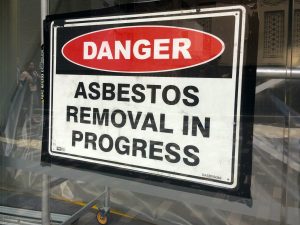Asbestos Legislation Evolution Part 1
Posted on Tuesday, June 7th, 2016 at 2:15 pm
Asbestos Legislation Evolution Part 1
The United States does not have a comprehensive federal law addressing asbestos. However, asbestos legislation was left to individual states to put in place. Most federal and state asbestos laws were motivated by two factors:
- Public safety, and
- Economic concerns
In the 1970s the United States government issued guidelines to limit asbestos exposure. These guidelines were followed by federal, state and local public safety laws in the 1980s.
Asbestos Legislation: Asbestos abatement Legislation
Much of the legislation passed has been on asbestos abatement. The United States Environmental Protection Agency (EPA) and Occupational Safety and Health Administration (OSHA) are the main federal agencies tasked with enforcing these laws. They have both played a pivotal role in the evolution on asbestos abatement legislation as they both deal with workers (e.g. construction industry)
Asbestos Legislation: Clean Air Act of 1970
Congress identified asbestos as a hazardous pollutant under this law. By asbestos being classified as a pollutant under this law, it significantly reduced the use of asbestos. This law has been amended over the years and has resulted in the EPA regulations governing the use and disposal of asbestos. This law has been adopted by other federal organs/agencies to protect workers and the public; for example, the OSHA regulations.
Asbestos Legislation: Toxic Substances Control Act (TSCA) of 1976
This law gave the EPA the power to regulate materials, both new and existing, that pose extensive health and environmental risks, like asbestos. The EPA in 1989, issued a rule that would ban most asbestos products. The rule was known as the ‘Asbestos Ban and Phaseout Rule’.
This rule would have prohibited the “manufacturing, importing, processing or distribution†of most products. But the rule was strongly opposed and was challenged in court. In 1991, the United States Court of Appeals Fifth Circuit rejected most of the rule. However, the rule achieved a ban on the following products:
- Corrugated paper
- Roll paper
- Commercial paper
- Specialty paper
- Flooring felt
- New uses of asbestos after 1989
